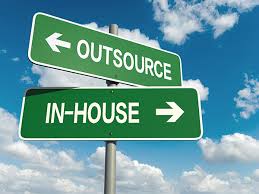Rethink The In-House Agency Hype

CMOs Should Rethink Their Efficiency Argument For An Effectiveness Strategy
Headlines blustering about in-house agencies have marketers buzzing and agencies fretting. While the in-house trend has grown in popularity, it still lacks in maturity. Forrester partnered with leading industry association In-House Agency Forum to track the progress of in-house development. Here’s what we know.
Popularity Soars
- Sixty-four percent of companies have in-house agencies, a dizzying 52% increase since 2008.
- Seventy-five percent of in-house agencies reported growing in staff size over the last two years.
- Over half employ 50-plus full-time employees.
Capability Lags
- Over 95% focus on creative services and production, while under a third provide data analytics or programmatic media.
- Eighty-five percent outsource work.
- Capability and capacity limitations are the top reasons for outsourcing.
Task In-House Agencies To Grow Business, Not Just Save Money
CMOs and in-house leaders should abandon the efficiency-only mindset and adopt an effectiveness strategy. In-house teams can produce quality work and business growth, provided CMOs supply the necessary resources (budgets, talent, technology). Companies are more likely to delight their customers and grow their margins if CMOs reposition in-house agencies as:
- A strategic resource, not a cost efficiency. Savvy CMOs view an in-house agency as a strategic resource to improve control, transparency, and marketing operations. These CMOs are better equipped to manage overall agency fees while justifying the expense as a strategic resource to their CFO counterparts.
- A creative champion, not just a creative service. Marketing teams that use in-house agencies as (re)production shops limit the opportunities for agencies to flex their creative chops. This creates a false perception, which hides their status as a latent creative powerhouse. CMOs aware of the caliber of in-house creative capability create a more even balance between reproduction and original work.
- A digital dynamo, not a digital dilettante. Marketers perceive the lack of digital know-how as the second-greatest disadvantage of in-house agencies. In truth, in-house agencies are adapting to align more with marketers’ digital needs. Some have been migrating expertise such as programmatic, CRM, and eCommerce in-house in the past few years.
- A partner to external agencies, not a source of competition. Treating work as a collaborative effort with a division of responsibilities among marketers, in-house agencies, and external agencies ensures productive relationships aimed at improving the work. CMOs that identify the strengths of all their partners and carve out specific remits for strategy and execution responsibilities ensure that they replace competition with coordination.
Blend Agencies, Don’t Break Them
CMOs that invest in their in-house digital marketing capabilities and business model will benefit from a valuable in-house partner to collaborate with external creative and media agency partners. This provides both in-house and external agencies a role. The best work and highest returns will come from CMOs that blend agencies, not break them.
Want to learn more? Read my latest report, “Unleash The Potential Of In-House Agencies,” or contact me at jpattisall@forrester.com.
